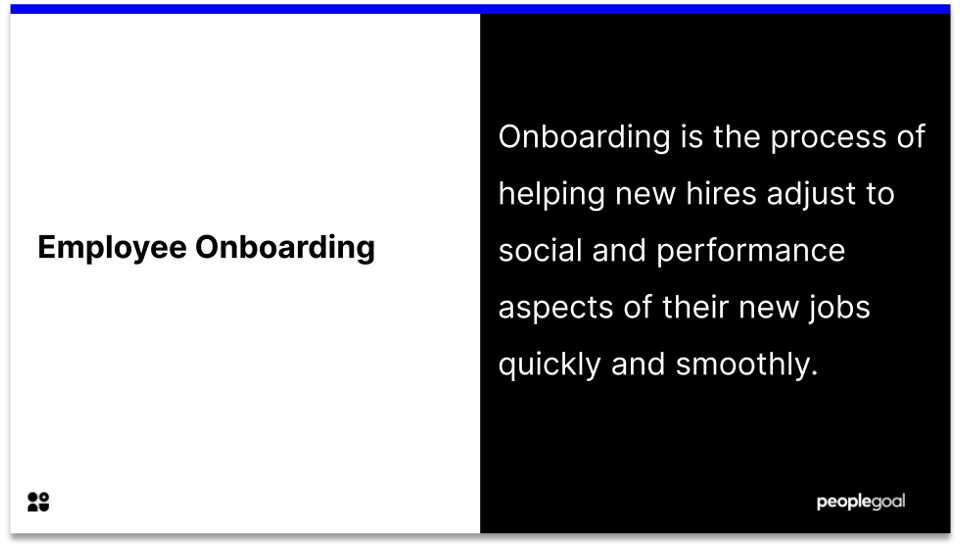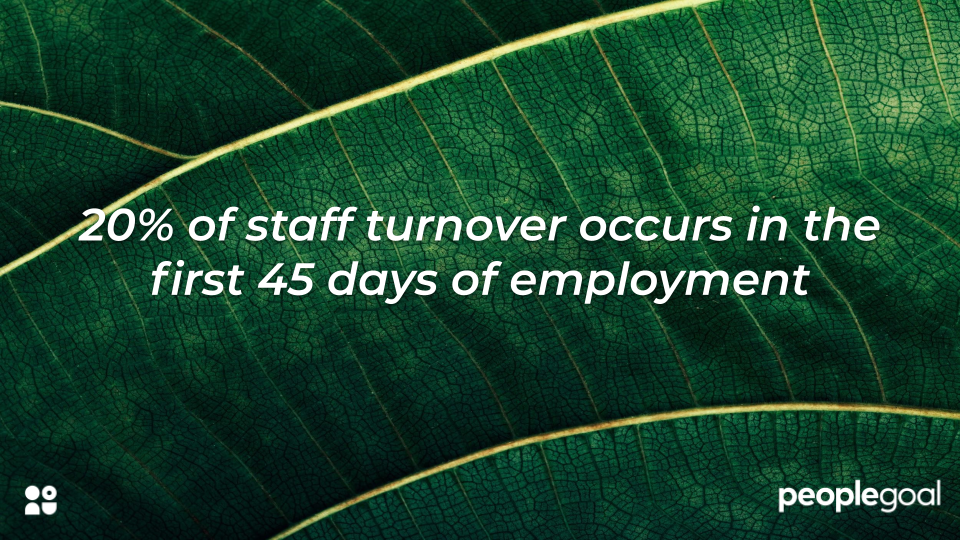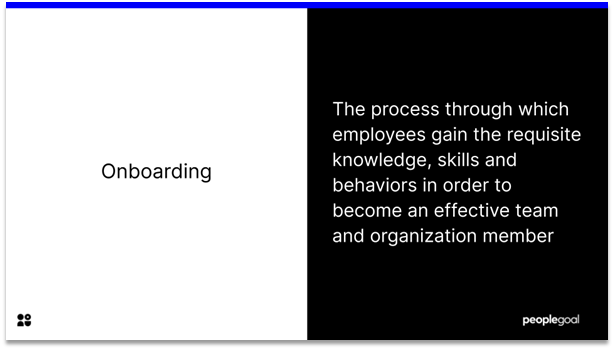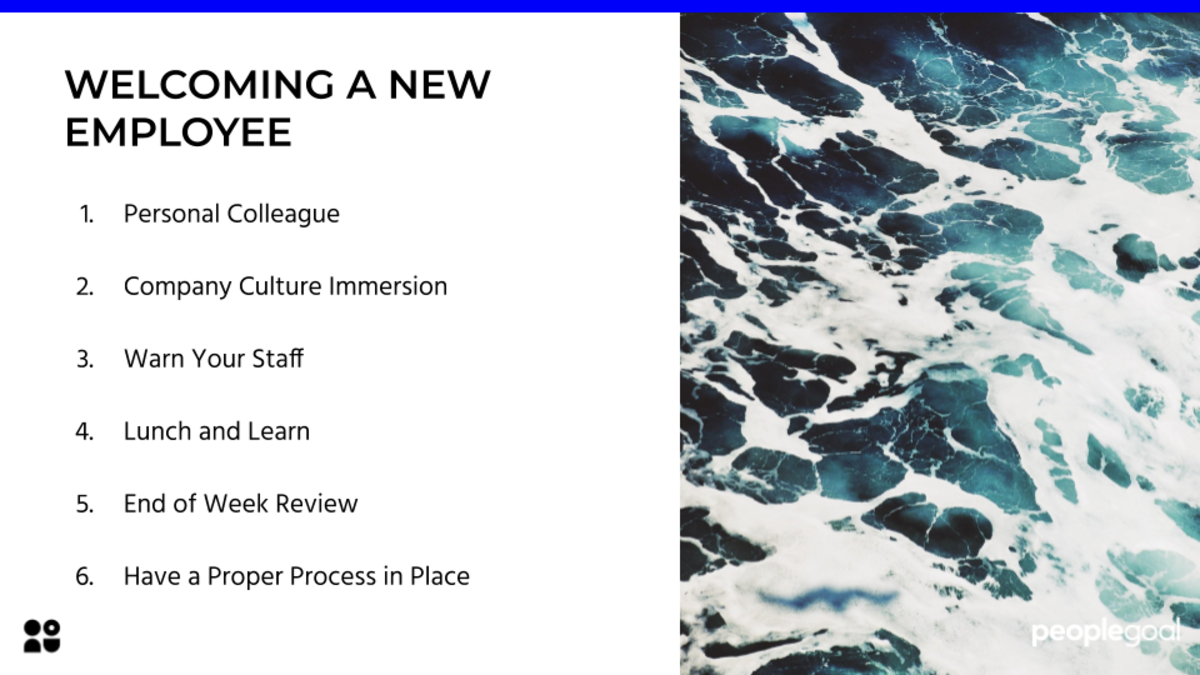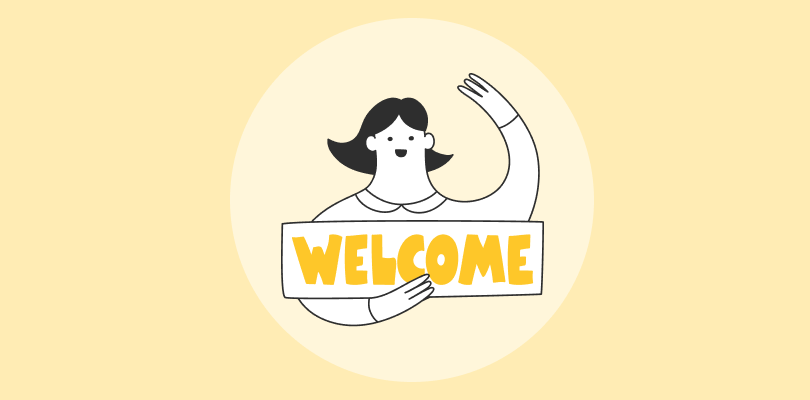You’ve succesfully hired a new star – carefully selected for their skills, knowledge and company cultural fit. You’re now four weeks into their term and they’re still not able to pick up tasks or find their way around the company processes. What’s gone wrong?
What you’re likely missing is a great employee onboarding process.
Why is the employee onboarding process so important?
After the application and job offer, employee onboarding is your new joiner’s first experience of the company and what their role will be.
How the business operates, who works within the team, and the knowledge of how to fulfil their role within the organization will be a few details of vital importance to a new hire.
If you don’t make a good impression you could be saying ‘au revior’ to talent before you can say the word onboarding.
According to The Wynhurst Group, “22% of staff turnover occurs within the first forty-five days of employment”.
The employee onboarding process involves many stakeholders, a few checklists and a lot of moving parts. It’s important that your new talent gets all the information they need at the right time to let them hit the ground running.

Where does employee onboarding go wrong?
Onboarding is not a singular event. There is more to a job than filling out a couple of forms and being given a desk.
Don’t be tempted to think your amazing new employee is so good that they’ll figure it all out on their own. The time and energy they waste scrambling for the information they need is distracting, confusing and gives a poor impression of the company they’ve just joined.
Even the most self-sufficient talent needs tools and resources to help them succeed, and they need time to get to know their teammates, their role and the company culture.
Onboarding doesn’t all happen on day one or even week one. Create a multi-week onboarding program with plenty of check-ins to get new hires fully immersed in the business, their colleagues and their objectives.
What benefits does a good employee onboarding process have?
With a winning employee onboarding process, you’re looking at a whole wealth of benefits.
- Developing well-adjusted new employees
- Reduced time to productivity
- Greater employee engagement
- Greater job satisfaction
- Higher performance, loyalty, and lower stress
- Greater retention rates, as new employees who partake in a structured onboarding process are 58% more likely to be with the same organization after three years
5 Checkpoints to Create a New Employee Onboarding Process
As with anything meaningful, it’s worth investing the time upfront to design an employee onboarding program that will be used for every new starter going forward. Creating a new process involves 5 steps.
Check 1: Gather your resources
- The HR team needs to collate all the important hiring documentation: contracts, policies, and references. Save these in an easy to find place so that you can send them out as a full pack to every new joiner.
- Make a list of all the resources and training material that’s available to new starters, and group these in an easy to find resource folder that you can attach to your onboarding process template.
Check 2: Involve key stakeholders
- Make sure everyone who’ll be involved in onboarding is aware of their role and their tasks.
- From the CEO to the office manager, IT support and line manager, define the roles (not necessarily the individuals) who’ll be helping with a new starter’s first few weeks at your company.
- These roles will filter down to your onboarding process template, so that you can quickly see which individuals will be involved in a specific employee’s onboarding program.
Check 3: Map out your onboarding process timeline
- The full onboarding process should last up to three months, and you should have timeline checkpoints for key onboarding event times.
- Each checkpoint will involve a few of the roles above, so mapping this out beforehand will help you to prepare individuals for their contribution.
- We’ve got all of the employee onboarding timeline steps you need to think of here.
Check 4: Design your employee onboarding template
- Now you can create an employee onboarding template that will be used every time a new employee joins your company.
- Plug in the key roles, timelines and tasks that each individual needs and your onboarding process will be fully documented!
- Doing this for the first time, you can use PeopleGoal’s onboarding process template to get started.
Download the Employee Onboarding Process Tempate for Google Sheets and MS Excel here
Check 5: Create a new joiner survey
- It’s really important that you’re able to measure the results of your onboarding process. The easiest way to do this is with a New Joiner Survey.
- Create a quick questionnaire to send to new talent after they’ve completed their onboarding program.
- Use the results to improve your onboarding process going forward. You can also check out the Do’s and Don’ts of Onboarding for tips on making an amazing onboarding process.
A couple of alternative approaches to employee onboarding
Who’s getting the employee onboarding process right?
Take Box.net, a cloud computing provider who hires new talent for their potential rather than for a position.
They give their new employees three months to learn about the company and integrate into the culture, then they let them choose which department they would like to join.
Or an even more outlandish onboarding touchpoint is Zappos’ offer of $2,000 to new employees to quit.
Regardless of which method you choose for onboarding, it’s the companies that invest in an onboarding structure which enables new hires to connect with colleagues, learn the company culture, have access to appropriate resources, and understand their role, that have greater overall employee engagement and retention.
Improving your employee onboarding process
Once you have created a system that works for you, keep it consistent. Use the same process for all new employees to make the results measurable.
Use the results from your New Joiner Survey to measure what went well and what needs to be improved. Make those changes for the next time and keep iterating.
Think of employee onboarding as a relationship – it’s a two way system. Although you are educating and evaluating your new hire’s potential, they’re also deciding whether or not they made the right choice to join your organization.
It’s vital that you make them feel welcome, appreciated, and engaged during the onboarding process.
Ready to 3x Your Teams' Performance?
Use the best performance management software to align goals, track progress, and boost employee engagement.
